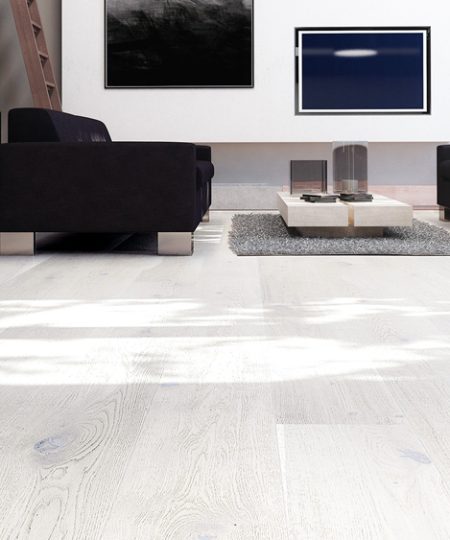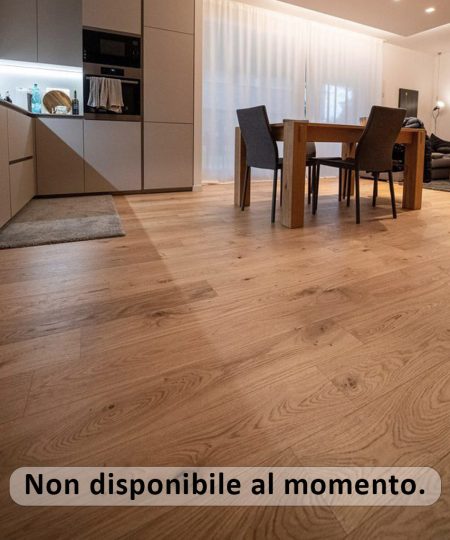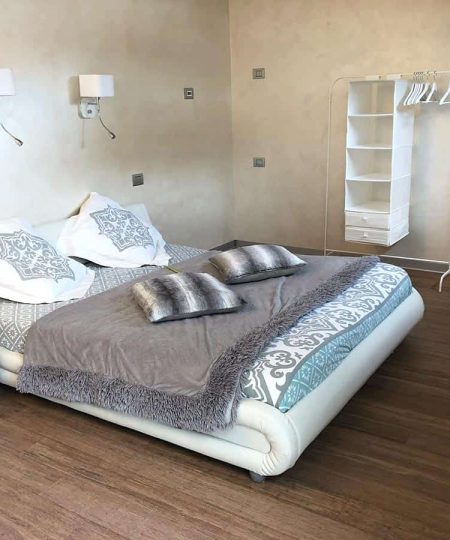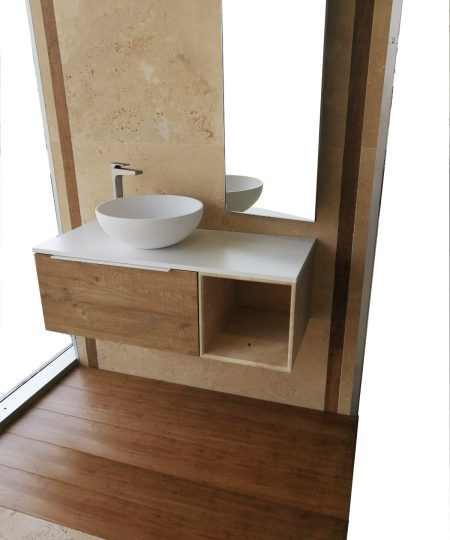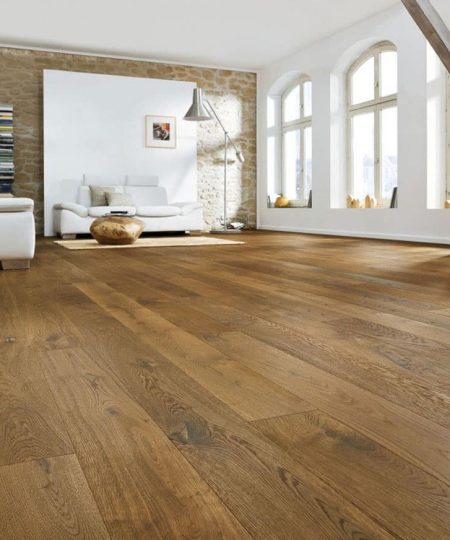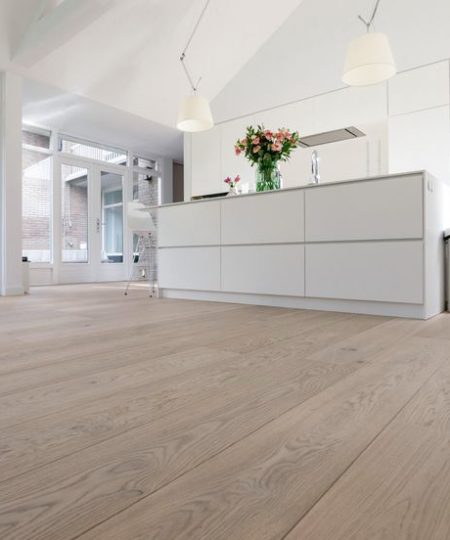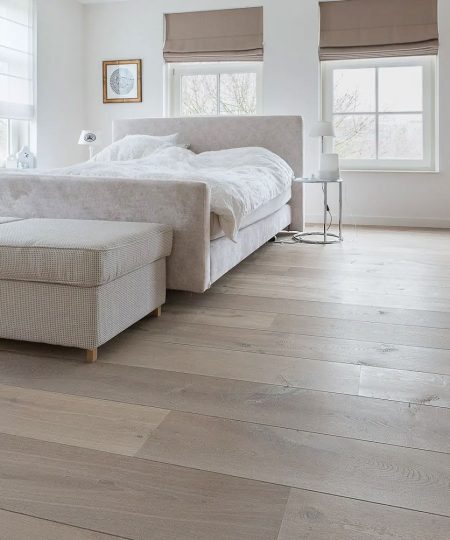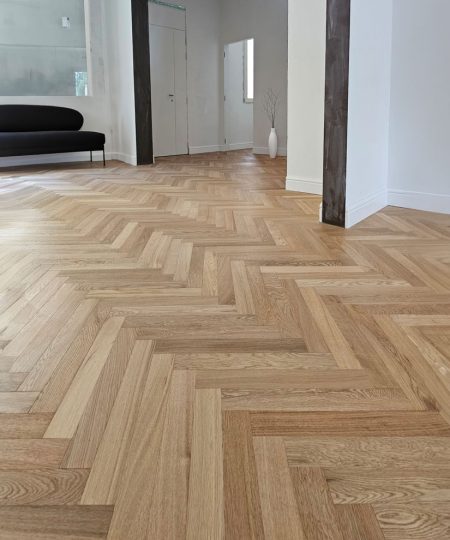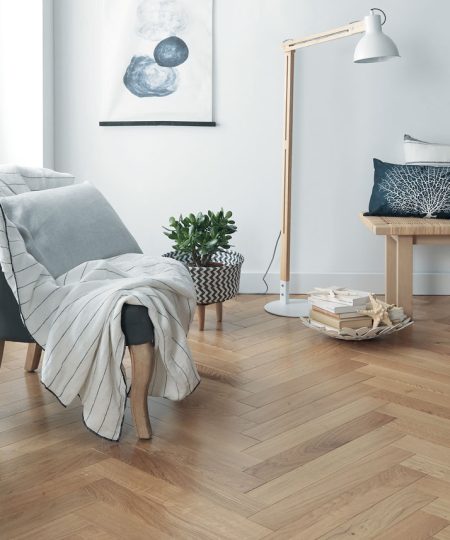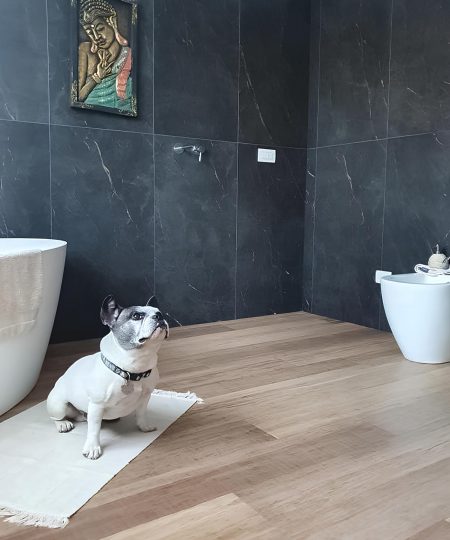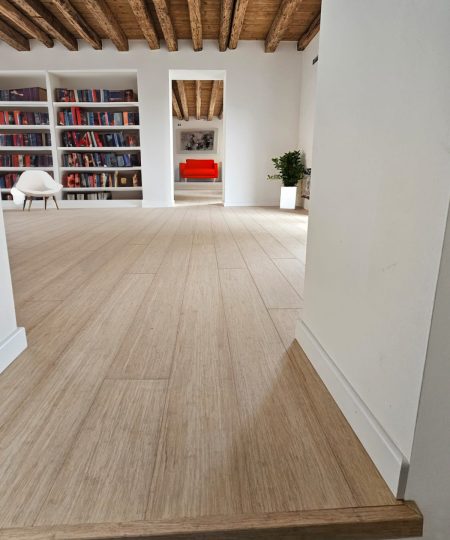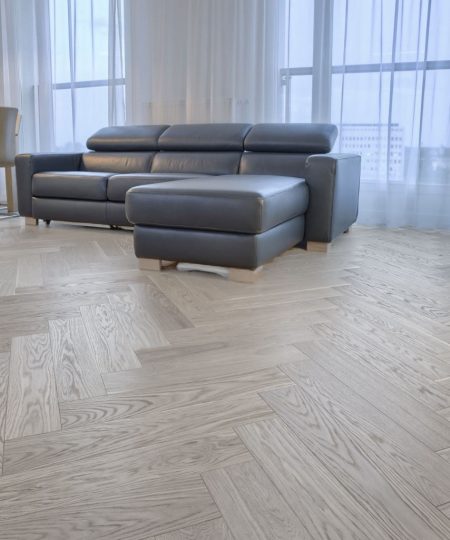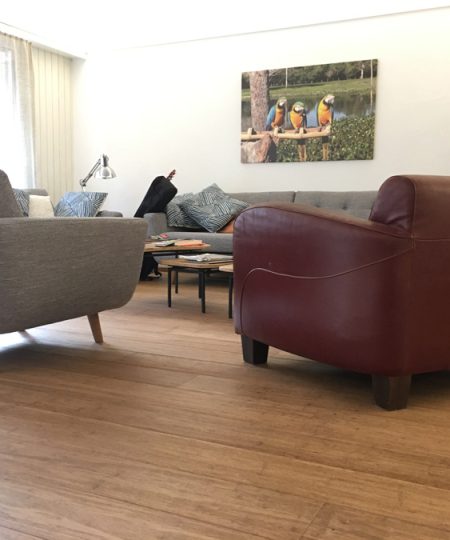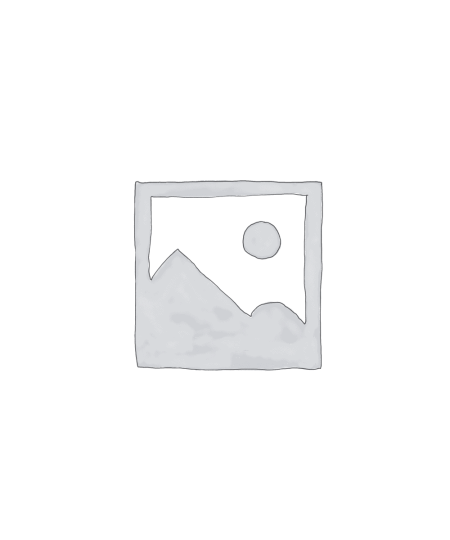Floor Heating Parquet
Underfloor heating parquet: heated wooden floors, pros and cons
Wood flooring for underfloor heating is intended as a wooden floor designed to be laid on radiant screeds capable of exchanging heat: they can have a heating function, giving their heat to the room, or cooling, receiving heat from the environment.
Contact us to receive a free sample. Also Saturday and Sunday from 9:00 to 19:00
There are different essences and types of wooden floors while in general the heating and / or cooling screeds are widely and regularly crossed in their thickness by serpentine pipes in which a fluid flows, capable of heating and / or cooling the rooms through the exchange. which occurs between the screed, with the wood flooring above it, and the environment.Keep reading...
There convenience to lay a parquet on a heating floor is precisely in the large exchange surface so available compared to other heating systems, which allows excellent distribution uniformity; from this follows the great advantage of being able to use fluids with a temperature relatively close to the ambient temperature (not too hot and not too cold), thus allowing a better operating economy , compared to other types of systems that require the installation of localized external exchanging bodies (radiators, fan coils, etc.).
The best conductivity is provided by low thickness and fully glued wood flooring, while for those nailed / screwed or floating it can be influenced by the further possible interposition of insulating layers (to be kept to a minimum for this type of screeds) between the same parquet and floor. warmed up.
The heating screed
It is a cement-based screed, crossed in its thickness by pipes in which a fluid flows that can heat the rooms through the floor rather than by means of radiators. The convenience of screed screed compared to other heating systems consists in the fact that it uses fluid at a relatively low temperature (max 30 ° -32’C), allowing good operating economy and uniform heat distribution.
1 – Screed (thickness above the coils ~ 2.5 cm) with electrowelded mesh
2 – Heating coils incorporated in the mat
3 – Perimeter joint
4 – Thermal insulation layer
5 – Barrier – vapor screen
6 – Supporting structure (floor)
The use of the wooden floor
Many wood flooring are suitable for laying on a heated screed as long as the elements are small in size and above all of stable wood species, in order to limit the width of the cracks that can form over time.
Only fully bonded floors and some types of floating floors are recommended.
Condition of the screed
The screed must be performed according to the instructions of wood flooring manufacturers of the heating system. It must possess all the requisites and characteristics of stability as for normal screeds since important interventions such as smoothing, leveling, consolidation, etc. are not recommended. The presence of the vapor barrier or screen between the layer where the systems are present and the thermal insulation layer is essential.
The pipes of the heating fluid must be covered by at least 3 cm of screed to allow even heat distribution and to avoid the formation of too accentuated cracks in the parquet. It is also advisable to provide a perimeter expansion joint at the thresholds of the doors between the various rooms. When laying the screed it is important to mark some points where it is possible to carry out humidity control measurements in order to avoid the risk of damaging the system.
Conditions for laying
The humidity cannot be higher than the values of:
– 1.7 for cement screed
– 1.5 for quick drying screed
– 0.2 for anhydrite screed
The client must guarantee the parquet installer the following conditions:
– the presence of a vapor barrier or screen;
– a minimum thickness of the screed of 6 cm of which at least 3 cm above the pipes;
– the minimum curing time for the screed, before starting the heating system, must be at least:
20 days for cement screed,
4 days for quick drying screed;
– that the heating has been running for at least 2-3 weeks, gradually increasing the temperature, until it reaches a maximum value of 35-40 “;
– the cooling process takes place by gradually reducing the temperature up to +20 0 approximately and the heating system must be turned off about 5 days before laying the parquet;
– prefer the use of adhesives with low water content to limit any deformation of the elements;
– do not glue the sides of the parquet together;
– the floor temperature, for reasons of stability, must not exceed 26-27 ° C and the ambient humidity must be between 45 and 60 in order to avoid any shrinkage due to drying;
– avoid covering the floors with carpets or other insulating materials;
– treat the parquet with vegetable oils, possibly avoiding painting.
Look at all our parquet for underfloor heating:
Code: OCS-S
Code: SWC-E-10
Code: SWT-E-10-S
Code: RNA-3-10-150
Code: SWC
Code: RNA-3-10-190
Code: RSO-2-10-190
Code: RN-2-10-190
Code: VCS-M-S
Code: SWC-M
Code: VCF-M-S
Code: OCF-M-S
Code: OCS-M-S
Code: SWTL-M-T
Code: SWN-M-S
Code: SWCS-M-S
Code: SWNS-M-S
Code: SWT-M-S









